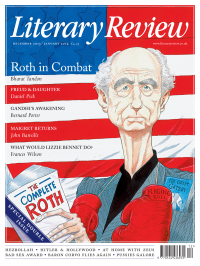Paul Addison
Don’t Mention the Tube Alloys
Churchill’s Bomb: A Hidden History of Science, War and Politics
By Graham Farmelo
Faber & Faber 554pp £25
When Churchill returned to the Admiralty in September 1939 he set up an experiment in the basement code-named ‘White Rabbit Number Six’. The aim was to construct a model of a giant machine that would cut a deep groove in the earth, along which soldiers could safely advance towards the enemy in the battles expected on the western front. Throughout the Phoney War Churchill pursued the idea with great excitement, demanding that scarce resources be diverted for the purpose. When France capitulated the project had to be mothballed, but the pursuit of technological wonders continued to be one of the most striking characteristics of his war leadership. Yet as Graham Farmelo remarks, the most revolutionary development of the war years – the making of the atom bomb – failed to capture his imagination.
Churchill had known long before 1939 of the potential of nuclear energy. He was well briefed on the subject by his friend Frederick Lindemann, the professor of experimental philosophy (ie physics) at Oxford. The two had first met in 1921. As a vegetarian and a teetotaller, Lindemann offended against Churchillian

Sign Up to our newsletter
Receive free articles, highlights from the archive, news, details of prizes, and much more.@Lit_Review
Follow Literary Review on Twitter
Twitter Feed
The era of dollar dominance might be coming to an end. But if not the dollar, which currency will be the backbone of the global economic system?
@HowardJDavies weighs up the alternatives.
Howard Davies - Greenbacks Down, First Editions Up
Howard Davies: Greenbacks Down, First Editions Up - Our Dollar, Your Problem: An Insider’s View of Seven Turbulent...
literaryreview.co.uk
Johannes Gutenberg cut corners at every turn when putting together his bible. How, then, did his creation achieve such renown?
@JosephHone_ investigates.
Joseph Hone - Start the Presses!
Joseph Hone: Start the Presses! - Johannes Gutenberg: A Biography in Books by Eric Marshall White
literaryreview.co.uk
Convinced of her own brilliance, Gertrude Stein wished to be ‘as popular as Gilbert and Sullivan’ and laboured tirelessly to ensure that her celebrity would outlive her.
@sophieolive examines the real Stein.
Sophie Oliver - The Once & Future Genius
Sophie Oliver: The Once & Future Genius - Gertrude Stein: An Afterlife by Francesca Wade
literaryreview.co.uk